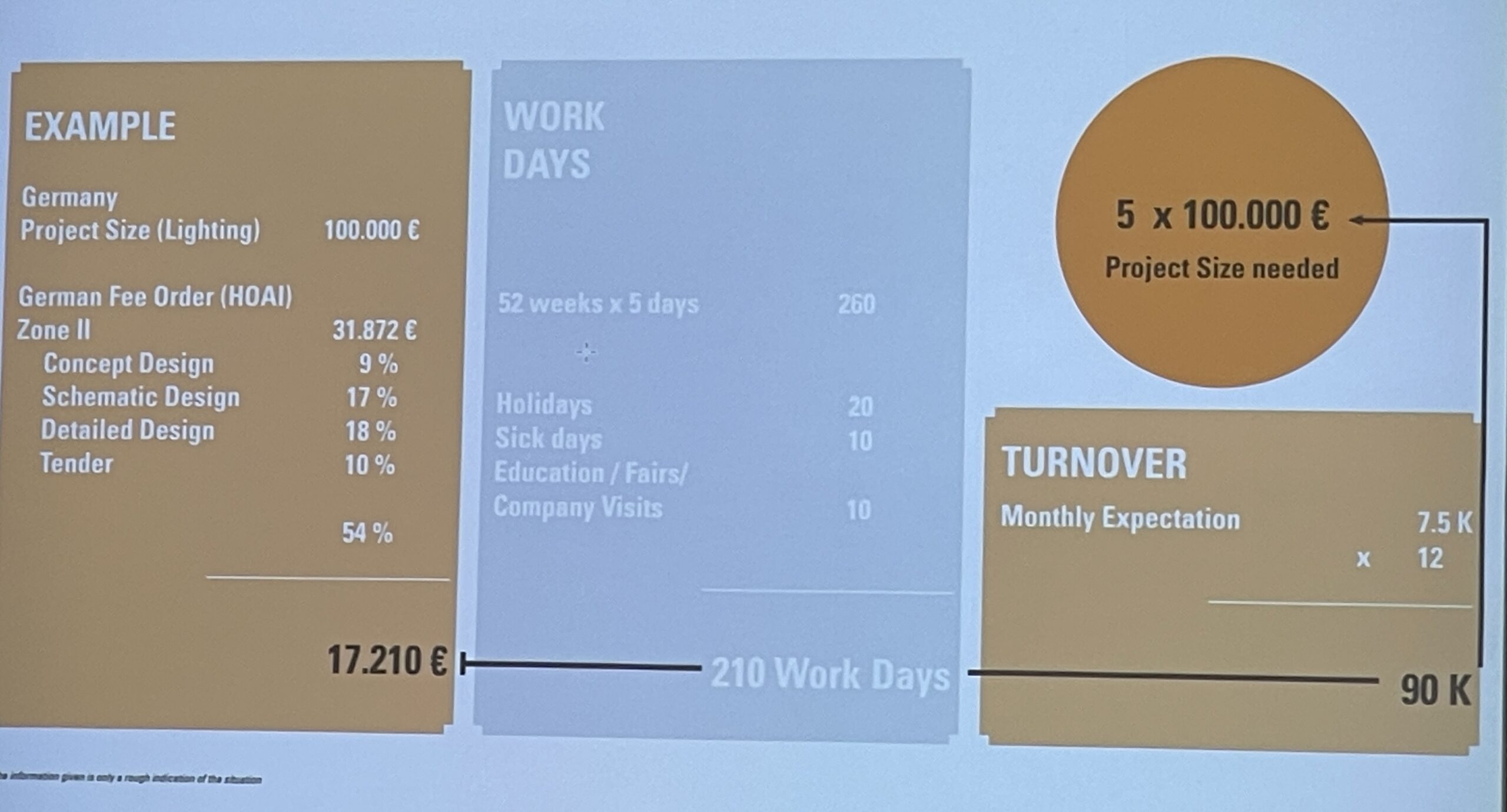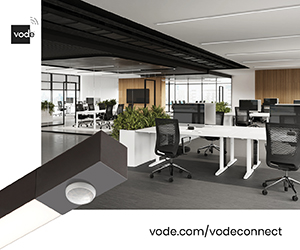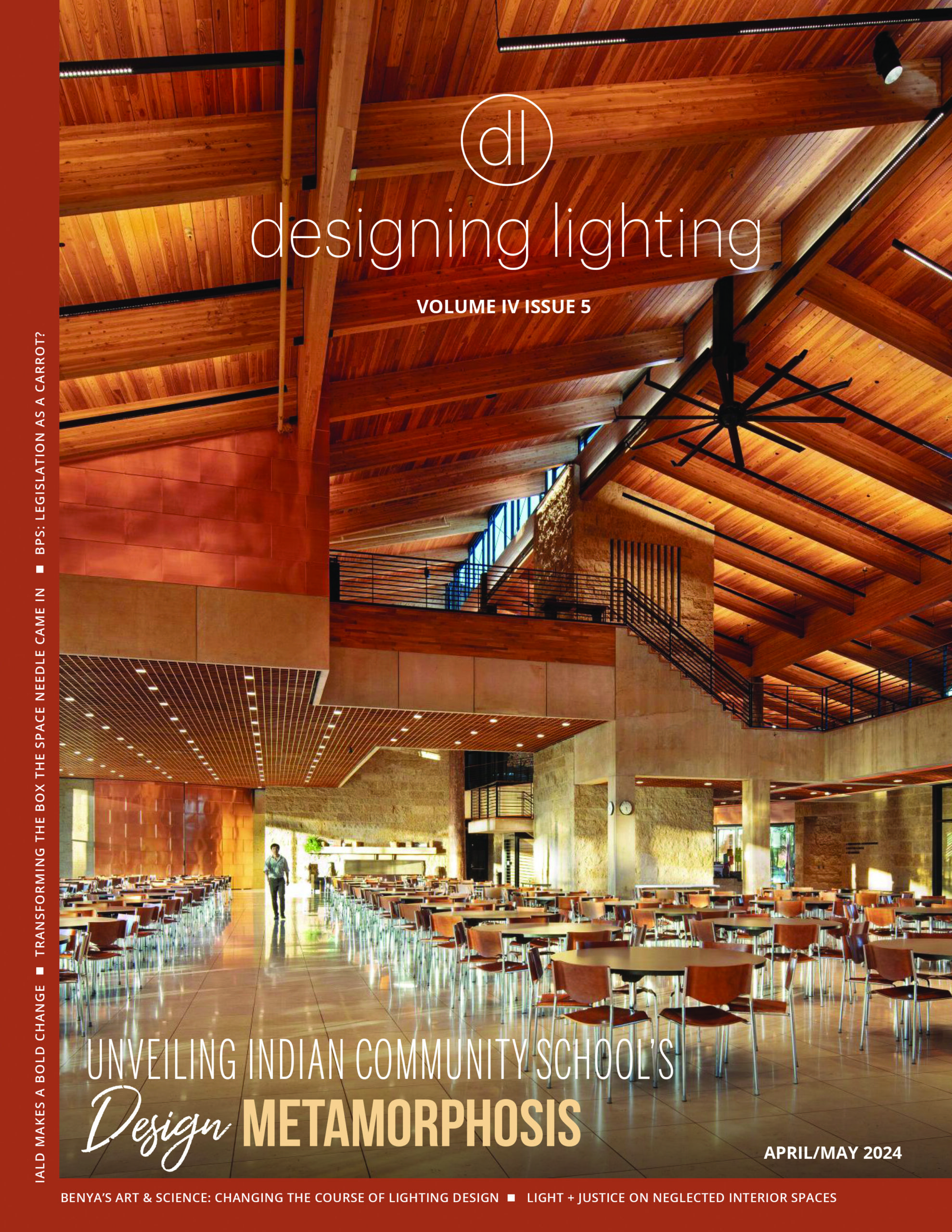Business Secrets Revealed. How to Become, Be, and Remain Successful
At the IALD Enlighten Europe Conference, Andreas Schulz, professor of lighting design at HAWK Hildesheim and CEO of Licht Kunst Licht, provided a profound insider’s view on the essential components of strategy, management, marketing, and financial control for building a sustainable and remarkable lighting design business.
His presentation aimed to empower young designers by emphasizing the significance of not only acquiring professional expertise/management skills but also nurturing essential “soft skills” for personal growth and success. It was evident that Andreas’s presentation “struck a chord” as numerous attendees captured images on their phones throughout his comments.
The session unfolded like a pop-up MBA course for lighting designers.
Reflecting on the industry’s evolution since his office’s founding in 1992, Andreas revealed a stark reality: fees have been halved due to increased competition, prompting him to emphasize the importance of understanding the financial dynamics within the field. He strongly discouraged starting one’s own design firm immediately after school. Instead, he advocated for gaining at least five years of experience with a professional company, leveraging the opportunity to learn, grow, and acquire invaluable knowledge without incurring the risks and challenges of entrepreneurship. He urged young designers to travel and explore different businesses, expanding their horizons and deepening their understanding of various industry practices.
Andreas also highlighted the significance of a personal skills profile analysis. This introspective process involved evaluating one’s leadership abilities, flexibility, enthusiasm, and compatibility within the business environment. He emphasized that success in lighting design hinges not only on design skills but also on intangible qualities.
Another consideration is determining the strength of one’s professional skills: are they design-related? Artistic? Technical?
Andreas urged aspiring designers to examine their comfort level with numbers, as financial literacy plays a pivotal role in running a successful lighting design firm. Aligning one’s skills/interests with the right segment within lighting design, such as culture, retail, traffic, landscape, sports, museums/art, daylight, controls, public, residential, sustainability, or production, was key to finding a niche and capitalizing on market opportunities.
Andreas implored the audience to “Know your skills and do not hesitate to find a complementary partner. Don’t try to be the one and only.” His list of important factors to consider include location, client base, competition, availability of competent employees, and transportation infrastructure. Each aspect plays a crucial role in establishing a successful business and ensuring seamless operations.
In terms of financial considerations, he wasted no time in providing concrete numbers. He estimated an initial investment of approximately €20,000, covering essentials like computers, software, and a website.
Throughout his presentation, Andreas emphasized the nuanced challenges associated with setting fees in the lighting design industry. While fees among electrical engineers tend to be standardized, lighting designers face a more diverse landscape, with significant variances between high and low fee offerings. He underscored the importance of securing proper compensation and the ongoing fight for fair fees.
To achieve a monthly personal income of approximately €3000, a firm needs to generate revenue of around €7500 per month. Deducting €2500 for business expenses, the young designer is left with €5000. After setting aside €2000 for taxes, insurance, and pension, she will have €3000 remaining for personal use.
To reach a gross income of €7500 per month, equivalent to €90,000 per year, considering 252 business days in a year, subtracting 12 for holidays and 20 for vacation, a designer is left with 220 working days. Therefore, the daily earnings target would be approximately €410.
In Germany, the government fee for a €100,000 lighting job (zone II) would generate €31,872 in fees if fully completed. However, a young designer may only handle a portion of the project as follows:
- Concept: 9%
- Schematic: 17%
- Detailed Design: 18%
- Tender: 10%
Therefore, the total fee she would earn is €17,210. To achieve the €90,000 annual income level, a designer needs to work on 5 projects simultaneously, earning approximately €100,000 in total. This allows for monthly living expenses of €3000. Alternatively, she could undertake a single project worth €500,000.

Andreas Schulz Shows a Financial Chart that shows a requirement of 90K Euro to meet minimum living expenses
Drawing attention to the financial challenges faced by artists, he revealed that approximately 85% of artists live below the poverty level, while only 1% achieve significant financial success. He stated “Many architects and lighting designers are living their life the same as when they were students. When they open their refrigerator, they see the same food and they are still drinking the same cheap wine.”
With the initial steps of establishing a company completed and a website launched, Andreas stressed the importance of documenting projects from early on in one’s career. He encouraged designers to capture photographs and videos that showcase the development of their work, utilizing platforms like Instagram to share their progress, wishing he would have done this. He cautioned against blurring the boundaries between personal and professional life on social media, advising designers to maintain a professional image and refrain from promoting other companies, stating, “If there is a sticker on a fixture, blur it out.” The focus should be on marketing oneself as a serious and active professional.
To maintain a strong connection with clients, Andreas advocated for the creation of newsletters to keep one’s name at the forefront of their minds. By nurturing ongoing communication, designers can increase the likelihood of securing projects months, or even years, down the line. While active participation in the industry is crucial, he cautioned against revealing company secrets and strategies to competitors, highlighting the need for discretion and the awareness that even friendly relationships can involve professional competition.
Staying on top of industry trends and expanding knowledge were essential themes. He urged designers to attend fairs, such as those focused on furniture, gardens, landscapes, and airports, to make new connections and stay informed.
The abundance of projects constantly available in the industry offers a proactive approach to education and experience. By visiting competitors’ projects, designers could learn from their success. And, he emphasized the value of reading lighting magazines and visiting projects to gain valuable insights and expertise: “When you see an exciting job in a magazine and you are on holiday in that city, visit that job and experience in-person what the designer accomplished.”
In closing, Andreas stressed the importance of being a role model both professionally and socially. Showing one’s face and actively engaging with the industry demonstrated a commitment to one’s craft and enhanced professional reputation. With these valuable insights in mind, aspiring lighting designers are equipped to navigate challenges, cultivate skills, and emerge as successful professionals in the world of lighting design.




